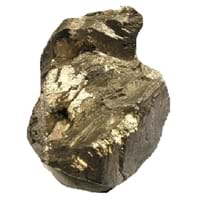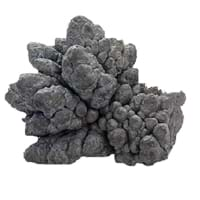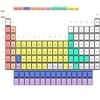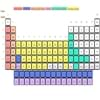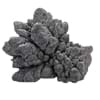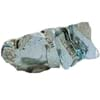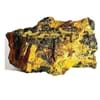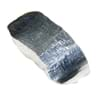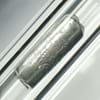Bismuth vs Lead
Periodic Table
Symbol
Bi
Pb
Group Number
15
3
14
4
Period Number
6
6
Block
p block
p block
Element Family
Post-Transition
Post-Transition
CAS Number
7440699
22
7439921
99+
Space Group Name
C12/m1
Fm_ 3m
Space Group Number
12.00
12
225.00
2
Facts
Interesting Facts
- Bismuth metal is soluble and reacts with concentrated nitric acid.
- It oxides are used as a yellow pigment in paint. Bismuth chloride oxide BiClO gives a pearly texture to cosmetics.
- Galena mineral contains almost 87% of Lead metal in it, Galena is sulfide mineral.
- The best available source of Lead metal today is by recycling automobile batteries.
Sources
Found in Minerals, Mining, Ores of Minerals
Earth's crust, Found in Minerals, Mining, Ores of metals, Ores of Minerals
History
Who Discovered
Claude François Geoffroy
Unknown
Discovery
In 1753
In Middle Easterns (7000 BCE)
Abundance
Abundance In Universe
7 * 10-8 %
25
1 * 10-6 %
16
Abundance In Sun
~0.000006 %
14
~0.000001 %
18
Abundance In Meteorites
0.00 %
99+
0.00 %
23
Abundance In Earth's Crust
0.00 %
99+
0.00 %
26
Abundance In Oceans
0.00 %
24
0.00 %
22
Abundance In Humans
Not Available
0.00 %
8
Uses
Uses & Benefits
- Tin and bismuth alloys have a very low melting point and hence it is used in fire detector and the fire extinguishers. It also used in electric solders and fuses.
- It is also used in insecticides, hair dyes and as an anti-knocking additive for petrol. But all these are banned by the government as Lead metal is known for detrimental to health.
Industrial Uses
Automobile Industry, Chemical Industry, Electrical Industry, Electronic Industry
Chemical Industry, Electrical Industry, Electronic Industry
Medical Uses
Pharmaceutical Industry
Surgical Instruments Manufacturing
Other Uses
Alloys
Alloys
Biological Properties
Toxicity
Low Toxic
Toxic
Present in Human Body
Yes
Yes
In Blood
0.02 Blood/mg dm-3
20
0.21 Blood/mg dm-3
11
In Bone
0.20 p.p.m.
22
30.00 p.p.m.
10
Physical Properties
Melting Point
271.30 °C
99+
327.50 °C
99+
Boiling Point
1,560.00 °C
99+
1,740.00 °C
99+
Appearance
Physical State
Solid
Solid
Color
Silver
Gray
Luster
Metallic
Metallic
Hardness
Mohs Hardness
2.25
15
1.50
18
Brinell Hardness
70.00 MPa
99+
38.00 MPa
99+
Speed of Sound
1,790.00 m/s
99+
1,190.00 m/s
99+
Optical Properties
Allotropes
No
No
α Allotropes
Not Available
Not Available
β Allotropes
Not Available
Not Available
γ Allotropes
Not Available
Not Available
Chemical Properties
Chemical Formula
Bi
Pb
Isotopes
Known Isotopes
33
6
35
4
Electronegativity
Pauling Electronegativity
2.02
6
1.87
13
Sanderson Electronegativity
2.34
3
2.29
4
Allred Rochow Electronegativity
1.67
6
1.55
11
Mulliken-Jaffe Electronegativity
2.15
4
2.41
2
Allen Electronegativity
2.01
4
1.85
8
Electropositivity
Pauling Electropositivity
1.98
99+
1.67
99+
Ionization Energies
1st Energy Level
703.00 kJ/mol
35
715.60 kJ/mol
31
2nd Energy Level
1,610.00 kJ/mol
33
1,450.50 kJ/mol
99+
3rd Energy Level
2,466.00 kJ/mol
99+
3,081.50 kJ/mol
23
4th Energy Level
4,370.00 kJ/mol
28
4,083.00 kJ/mol
35
5th Energy Level
5,400.00 kJ/mol
30
6,640.00 kJ/mol
20
6th Energy Level
8,520.00 kJ/mol
19
Not Available
Electrochemical Equivalent
2.60 g/amp-hr
19
3.87 g/amp-hr
9
Electron Work Function
4.22 eV
22
4.25 eV
21
Other Chemical Properties
Ionization, Radioactive Isotopes, Solubility
Anti Corrosion, Ionization, Radioactive Isotopes
Atomic Properties
Atomic Number
83
33
82
34
Electron Configuration
[Xe] 4f14 5d10 6s2 6p3
[Xe] 4f14 5d10 6s2 6p2
Crystal Structure
Rhombohedral (RHO)
Face Centered Cubic (FCC)
Crystal Lattice
RHO-Crystal-Structure-of-Bismuth.jpg#100
FCC-Crystal-Structure-of-Lead.jpg#100
Atom
Number of Protons
83
33
82
34
Number of Neutrons
126
18
125
19
Number of Electrons
83
33
82
34
Radius of an Atom
Atomic Radius
156.00 pm
29
175.00 pm
19
Covalent Radius
148.00 pm
36
146.00 pm
38
Van der Waals Radius
207.00 pm
26
202.00 pm
27
Atomic Weight
208.98 amu
29
207.20 amu
30
Atomic Volume
21.30 cm3/mol
14
18.17 cm3/mol
27
Adjacent Atomic Numbers
Valence Electron Potential
41.90 (-eV)
99+
24.20 (-eV)
99+
Lattice Constant
667.40 pm
2
495.08 pm
16
Lattice Angles
NA
π/2, π/2, π/2
Lattice C/A Ratio
Not Available
Not Available
Mechanical Properties
Density
Density At Room Temperature
9.78 g/cm3
39
11.34 g/cm3
33
Density When Liquid (at m.p.)
10.05 g/cm3
18
10.66 g/cm3
15
Tensile Strength
Not Available
12.00 MPa
20
Viscosity
Not Available
Not Available
Vapor Pressure
Vapor Pressure at 1000 K
Not Available
1.64 (Pa)
7
Elasticity properties
Shear Modulus
12.00 GPa
99+
5.60 GPa
99+
Bulk Modulus
31.00 GPa
38
46.00 GPa
24
Young's Modulus
32.00 GPa
99+
16.00 GPa
99+
Poisson Ratio
0.33
11
0.44
3
Other Mechanical Properties
NA
Ductile, Malleable
Magnetic Properties
Magnetic Characteristics
Specific Gravity
9.79
30
11.35
25
Magnetic Ordering
Diamagnetic
Diamagnetic
Permeability
0.00 H/m
6
Not Available
Susceptibility
0.00
6
Not Available
Electrical Properties
Electrical Property
Semiconductor
Poor Conductor
Resistivity
1.29 nΩ·m
99+
208.00 nΩ·m
16
Electrical Conductivity
0.01 106/cm Ω
99+
0.05 106/cm Ω
36
Electron Affinity
91.20 kJ/mol
11
35.10 kJ/mol
28
Thermal Properties
Specific Heat
0.12 J/(kg K)
40
0.13 J/(kg K)
39
Molar Heat Capacity
25.52 J/mol·K
37
26.65 J/mol·K
26
Thermal Conductivity
7.97 W/m·K
99+
35.30 W/m·K
38
Critical Temperature
Not Available
Not Available
Thermal Expansion
13.40 µm/(m·K)
28
28.90 µm/(m·K)
13
Enthalpy
Enthalpy of Vaporization
151.00 kJ/mol
99+
179.40 kJ/mol
99+
Enthalpy of Fusion
10.90 kJ/mol
33
4.77 kJ/mol
99+
Enthalpy of Atomization
207.10 kJ/mol
99+
194.60 kJ/mol
99+
Standard Molar Entropy
56.70 J/mol.K
24
64.80 J/mol.K
17
|
||
|
||
|
|
||
|
||
|
